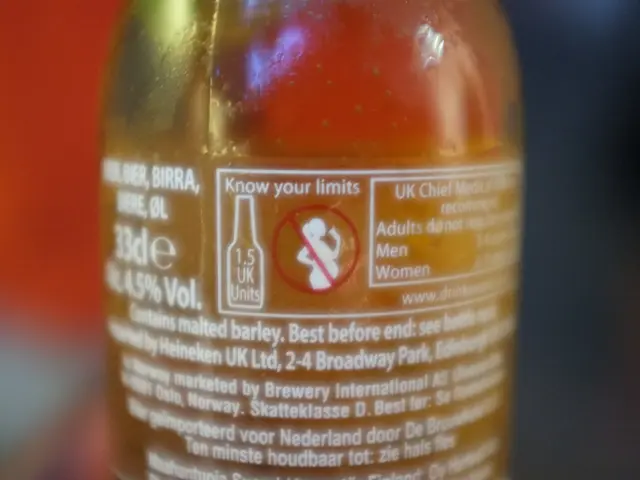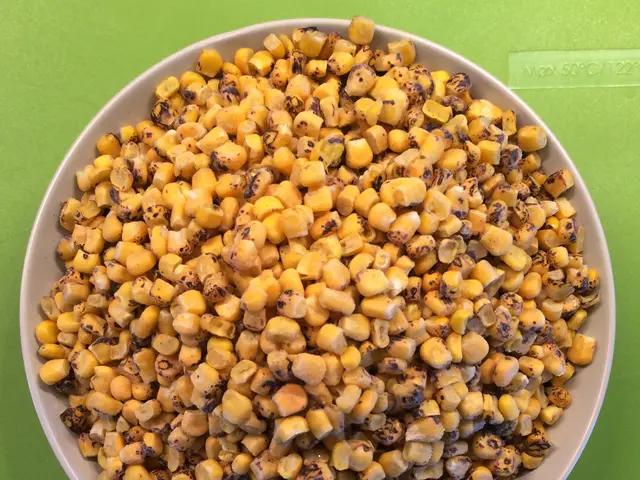Croissants Given Negative Evaluation in 30-Year-Old Research, Reasons Revealed.
Grab a cup of Joe, because it's time to talk about your favorite breakfast treat, but maybe not for the reasons you think. That fantastic croissant? One that sounds heavenly with a cappuccino? Well, it's not exactly living up to the hype.
Cutting straight to the point, that golden, flaky delight sits at the bottom of the satiety index, a ranking that tells us how filling different foods are, calorie for calorie. Sure, boiled potatoes are the kings of the game, but let's dive into what makes up the ranking.
Satiety: It's More Than Just Calories
When we eat, our bodies react to several factors, like weight, volume, protein content, fiber, and water. It's not just about how many calories a food has. In a 1995 study by the University of Sydney, researchers gave participants 240-calorie servings of 38 common foods and waited to see how long it took till they were hungry again.
Each food's satiety score was calculated by comparing the area under the curve of satiety responses to that of white bread, which was set at 100. Foods scoring above 100 were more filling, while those below were less. This clever method revealed the foods that kept people fuller for longer - regardless of calorie count.
Why Croissants Fail
Croissants don't fare well in this test. Let's break it down:
- Low Protein: Protein is the hunger-fighting nutrient, and croissants don't have much to offer in that department.
- Low Fiber: Fiber bulks up in the gut, slows digestion, and keeps you full longer. Croissants? No thanks. Instead, think of oatmeal (209) or apples (197) for fiber.
- High Fat, Low Water: That buttery flake you love? It's dry, calorie-dense, and slips through the digestive system like a cheat code, leaving little residue to signal "full."
Things get worse when we consider that croissants hit the pleasure centers hard. The more "palatable" a food is, the more likely we are to overeat it. This isn't about banning croissants; it's about knowing the truth if you're aiming for fullness and energy.
So, What Foods Should You Eat Instead?
Unsurprisingly, unprocessed foods tend to be more filling. But it's not just fruits and veggies; oatmeal, bran, eggs, cheese, and even some whole-grain breads can help keep your hunger at bay:
- Boiled Potatoes: The king of satiety. Surprisingly low in calories for their weight, and packed with water and fiber.
- Oatmeal: Warm, slow-digesting, and rich in fiber.
- Eggs: High in protein and filling than toast or bread.
- Popcorn: Air-popped and unbuttered, it's bulky and low-calorie - a brilliant snack.
- Whole Grain Breads: The fiber makes all the difference. Add in some protein, like peanut butter, for a boost in fullness.
These foods don't just fill your stomach, but they also give your digestive system something to work on. That translates into fewer cravings, better focus, and maybe fewer 3 p.m. cookie raids.
Why This Matters
This study is three decades old, but it's never been more relevant. We're still wrapped up in a food culture that obsesses over calories, macros, and willpower, while largely ignoring satiety. This study can help you make smarter, more sustainable food choices while avoiding the dreaded croissant.
Knowledge is power, especially when it comes to understanding how different foods affect our hunger. Embrace this index and redefine your relationship with food.
calories, croissant, filling, green, potato, satiety
[1] Improving the healthfulness of the U.S. food supply: What is the role for the food-processing industry? A review of the literature, Wolfson T, Lichtenstein AH, Berkey CS, et al. Prev Chronic Dis, 2018.[2] Dietary Fiber and Prevention of Colorectal Cancer, Slavin JL. Am J Lifestyle Med, 2013.[3] Protein and Satiety, Westerterp KR. J Endocrinol Invest, 2012.
- The study conducted by the University of Sydney in 1995 revealed that foods high in protein, fiber, and water help promote feelings of fullness for longer, with boiled potatoes scoring the highest on the satiety index.
- Croissants, despite being delicious, have a low score on the satiety index due to their low protein and fiber content, high fat content, and low water content.
- Incorporating foods that are high in protein, fiber, and water, such as oatmeal, eggs, whole-grain breads, and boiled potatoes, can help individuals avoid overeating and maintain energy levels throughout the day.
- Despite the popularity of counting calories, it's essential to consider the satiety level of specific foods to make informed and sustainable choices for health and wellness, fitness and exercise, food and drink, and overall lifestyle.








